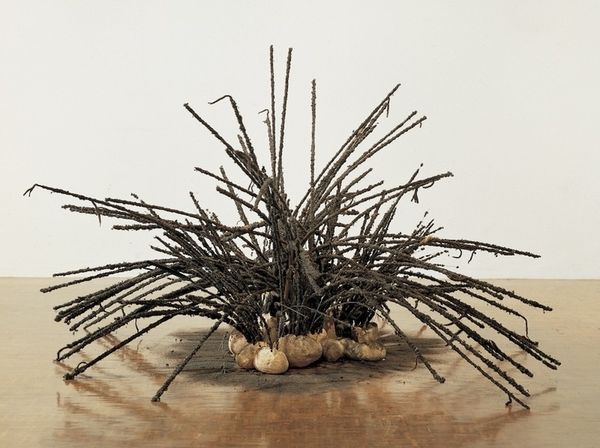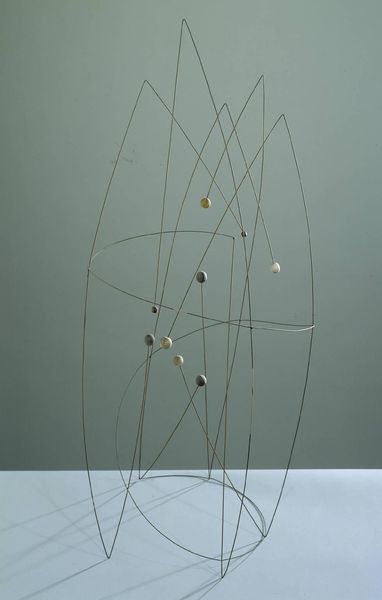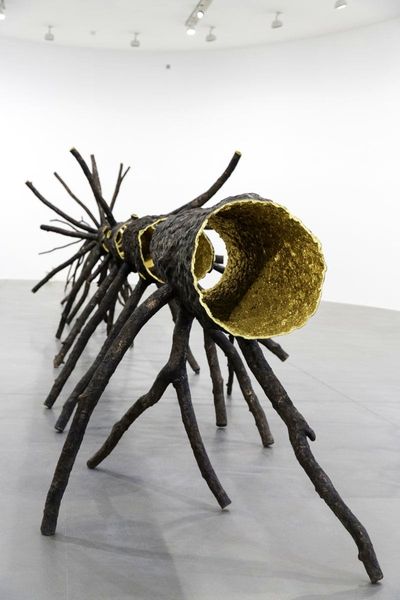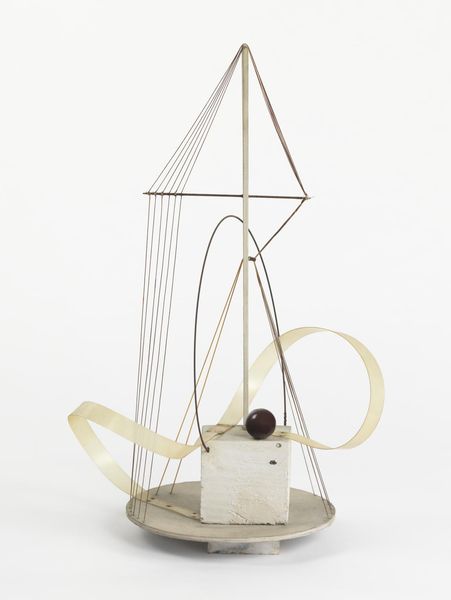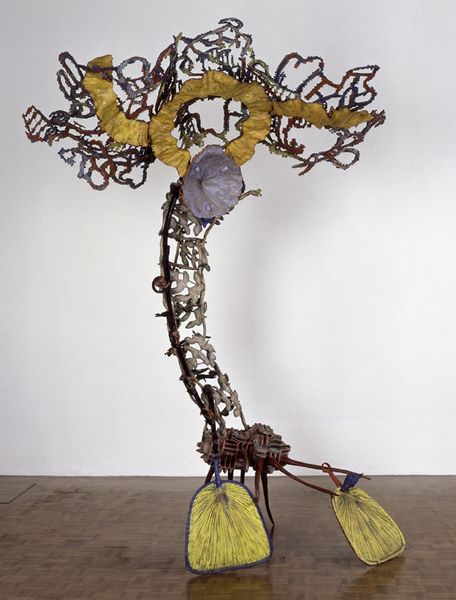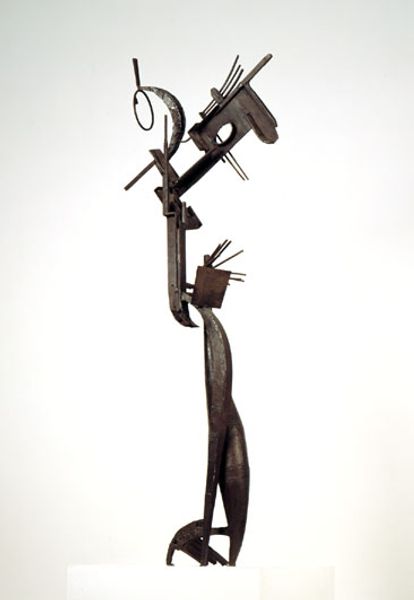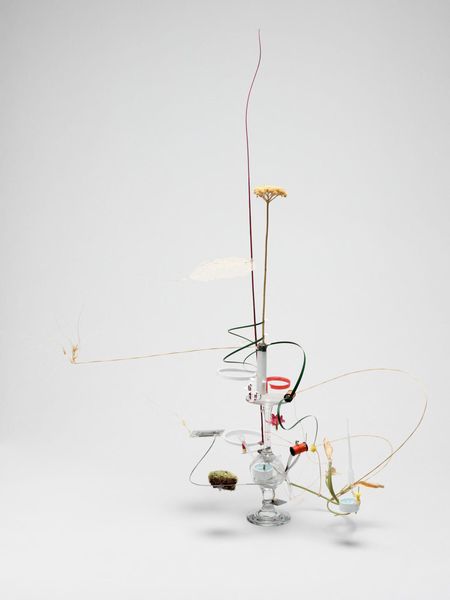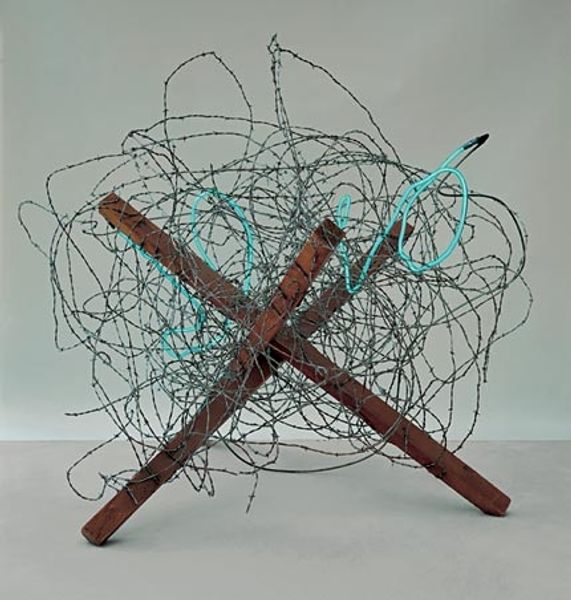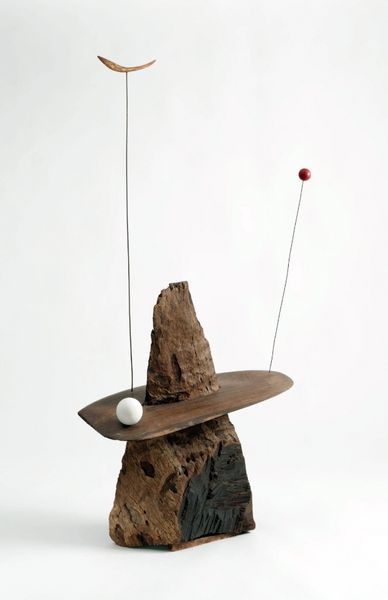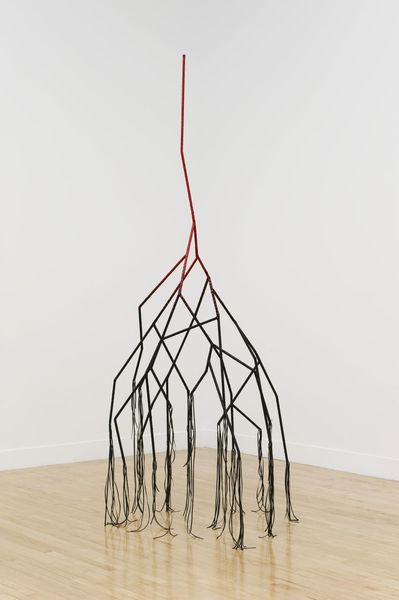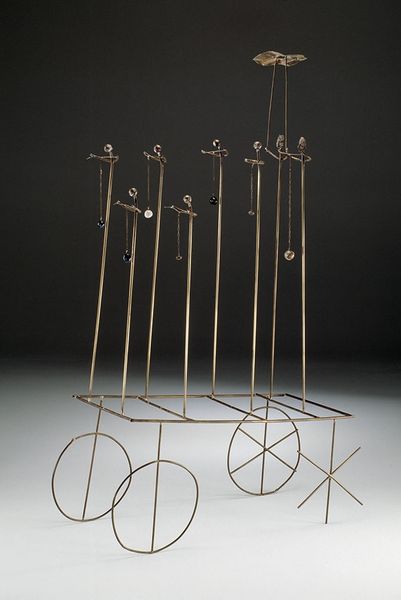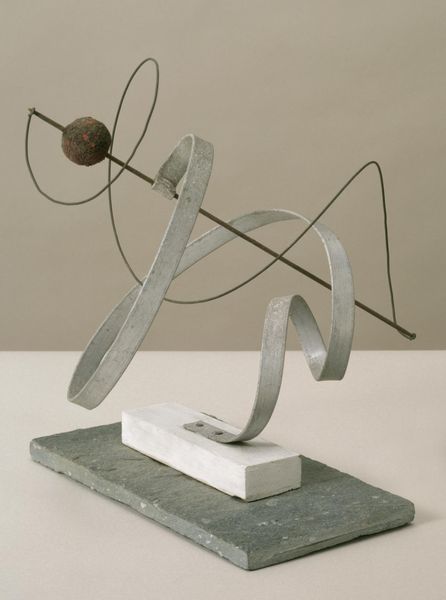
Copyright: Charles Long,Fair Use
Curator: Charles Long created this piece, "Agnes Martin Kippenberger," in 2005. It's an intriguing assemblage of mixed media including metal and found objects. Editor: It's definitely odd. The initial feeling is… unsettling. The gray lumps perched on metal stems give the impression of wilted flowers made of concrete. Curator: I find that reaction quite interesting given Long’s typical engagement with post-studio practices. The materials themselves – consider the steel rebar base versus the rough-hewn plaster or concrete forms – suggest an inquiry into industrial and craft production. Where were these materials sourced? Who assembled them and how? These are crucial considerations. Editor: All valid points, of course, but first looking at the shapes, I'm struck by the almost caricatured crudeness of the head-like forms on the stems. The base provides a rigid framework in contrast with the free forms it supports. Is there a symbolic conversation between these materials, perhaps regarding society’s treatment of creativity? Curator: I would suggest the materiality informs this quite a bit. Take, for instance, the use of 'found objects'. This signals not only the artist's intent to repurpose and redefine what constitutes art but also brings in associated histories embedded in each object – wear, tear, origin, etc. It removes that traditional hierarchical distance between creator and art, almost democratic. Editor: I do agree; there's an appealing element of chance and intuition at work that softens the impact of the harsh metal supports. They seem very vulnerable. But, the repetitive aspect makes me also see some type of alienating uniformity. Curator: Perhaps we're looking at Long commenting on the industrialized homogenization of art or culture, using the actual processes and materials as commentary? Editor: Regardless, "Agnes Martin Kippenberger" provokes, challenges and uses materiality in a unique way to reflect culture. Curator: Indeed. The artwork reveals how the interplay of labor, consumption, and intention shapes our aesthetic experience, inviting reflection on the everyday processes behind art production.
Comments
No comments
Be the first to comment and join the conversation on the ultimate creative platform.

